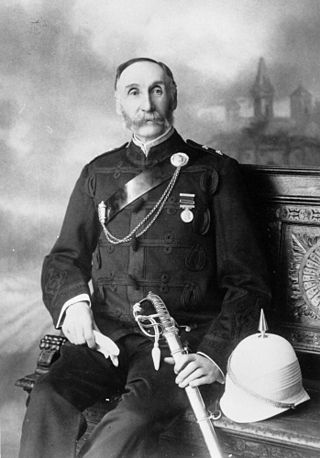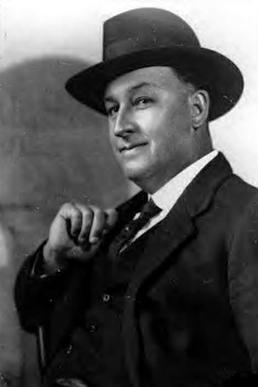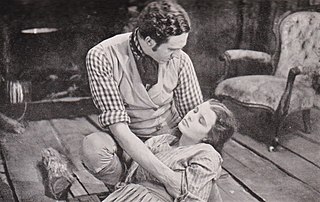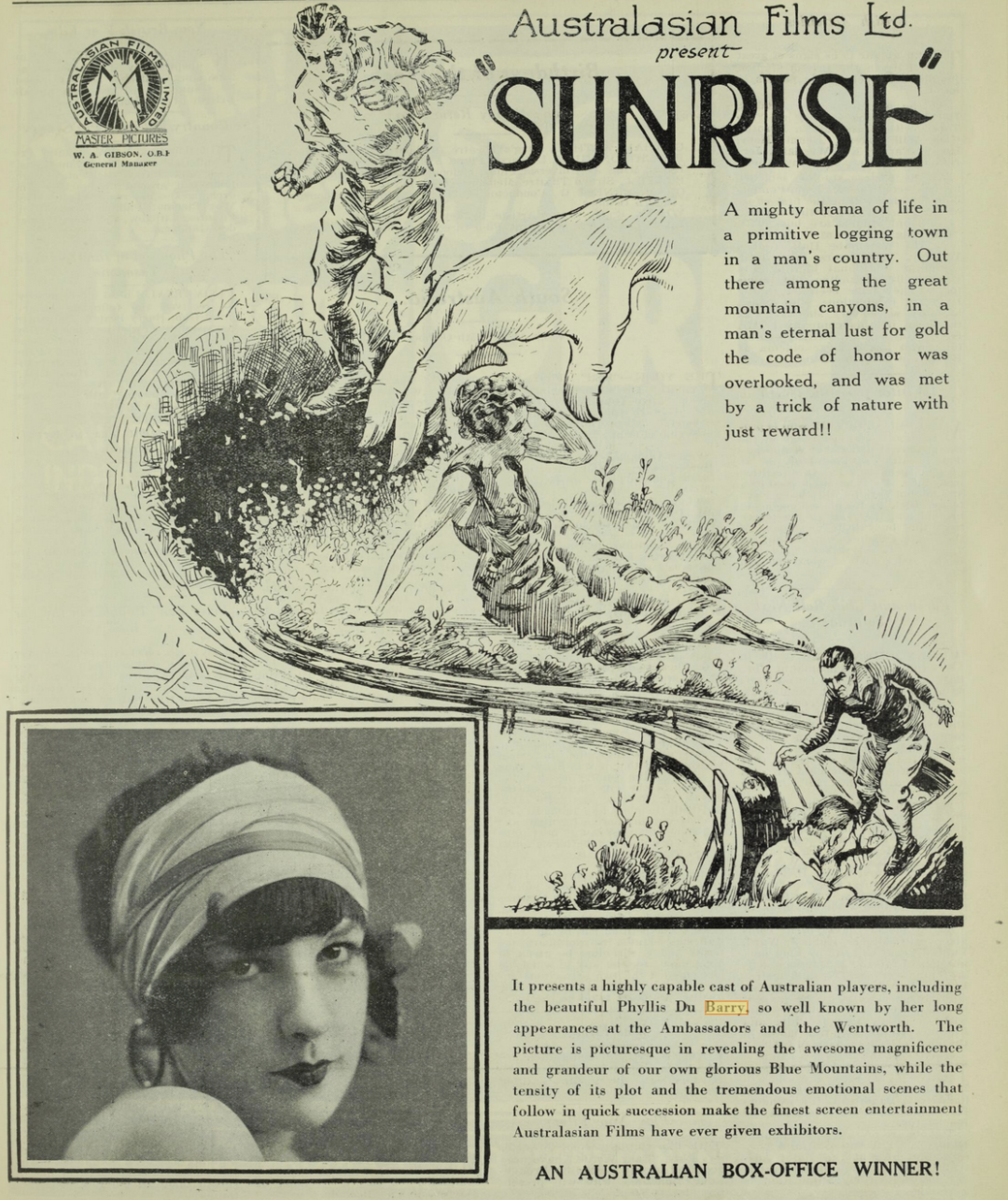Related Research Articles

Thunderbolt is a 1910 film in the genre of "outlaw" films at the time that tended to glorify the life of the outlaw "Bushrangers" that roamed the Australian outback in pre-commonwealth days. Shortly after this film was made, the government of New South Wales banned the manufacture of this type of film on the basis that they were promoting crime.

Jedda, released in the UK as Jedda the Uncivilised, is a 1955 Australian film written, produced and directed by Charles Chauvel. His last film, it is notable for being the first to star two Aboriginal actors, Robert Tudawali and Ngarla Kunoth in the leading roles. It was also the first Australian feature film to be shot in colour.

Charles Edward Chauvel OBE was an Australian filmmaker, producer and screenwriter and nephew of Australian army General Sir Harry Chauvel. He is noted for writing and directing the films Forty Thousand Horsemen in 1940 and Jedda in 1955. His wife, Elsa Chauvel, was a frequent collaborator on his filmmaking projects.

The Brisbane International Film Festival (BIFF) is an annual film festival held in Brisbane, Australia. Organised by the Screen Culture unit at Screen Queensland, the festival has taken place since 1992, with the program including features, documentaries, shorts, indies, experimental efforts, retrospectives, late night thrillers, animation, and children's films. The festival has attracted more than 400,000 visitors across its history. The festival was replaced by the Brisbane Asia Pacific Film Festival from 2014-2016 but has been revived in 2017 while the Brisbane Asia Pacific Film Festival has ceased operations. In 2018, BIFF was held at Queensland Art Gallery | Gallery of Modern Art (QAGOMA), with screenings held across multiple venues.

William Edward Parry-Okeden was a public servant, Police Commissioner and Protector of Aborigines (1895-1903), as well as a horseman, in Queensland, Australia. He stood 6 ft 2 in (1.88 m) tall.

John F. Gavin was a pioneer Australian film actor and director, one of the early filmmakers of the 1910s. He is best known for making films about bushrangers such as Captain Thunderbolt, Captain Moonlite, Ben Hall and Frank Gardiner. Known informally as 'Jack', Gavin worked in collaboration with his wife Agnes, who scripted many of his films.

Mary Maguire was an Australian-born actress who briefly became a Hollywood and British film star in the late 1930s.

Forty Thousand Horsemen is a 1940 Australian war film directed by Charles Chauvel. The film tells the story of the Australian Light Horse which operated in the desert at the Sinai and Palestine campaign during World War I. It follows the adventures of three rowdy heroes in fighting and romance. The film culminates at the Battle of Beersheba which is reputedly "the last successful cavalry charge in history". The film was clearly a propaganda weapon, to aid in recruitment and lift the pride of Australians at home during World War II. It was one of the most successful Australian movies of its day. It was later remade in 1987 as The Lighthorsemen.
Sons of Matthew is a 1949 Australian film directed and produced and co-written by Charles Chauvel. The film was shot in 1947 on location in Queensland, Australia, and the studio sequences in Sydney. Sons of Matthew took 18 months to complete, but it was a great success with Australian audiences when it finally opened in December 1949.

Raymond Longford was a prolific Australian film director, writer, producer, and actor during the silent era. Longford was a major director of the silent film era of the Australian cinema. He formed a production team with Lottie Lyell. His contributions to Australian cinema with his ongoing collaborations with Lyell, including The Sentimental Bloke (1919) and The Blue Mountains Mystery (1921), prompted the Australian Film Institute's AFI Raymond Longford Award, inaugurated in 1968, to be named in his honour.

Elsa Chauvel, was an Australian filmmaker and actress, and the wife and collaborator of film director Charles Chauvel. Elsa Chauvel was a pioneer in Australian film making, best known for her contributions to films such as Greenhide, In the Wake of the Bounty, and Jedda. Her legacy in Australian film was celebrated with the creation of the Chauvel Award, dedicated to the work of Elsa and Charles Chauvel, which honours Australian excellence in film.

Heritage is a 1935 Australian historical film directed by Charles Chauvel.
The Moth of Moonbi is a 1926 Australian film directed by Charles Chauvel. It was adapted from The Wild Moth, a 1924 novel by Australian author Mabel Forrest. It was Queensland's first feature length film

Rangle River is a 1936 Australian Western film directed by Clarence G. Badger based on a story by Zane Grey.

Sunrise is a 1927 Australian silent film co-directed by Raymond Longford, who took over during filming.
The Tenth Straw is a 1926 Australian silent film heavily inspired by the novel For the Term of His Natural Life. Little is known of the director and cast, but most of the film survives today.
Around the Boree Log is a 1925 Australian silent film by Phil K. Walsh adapted from the poems of "John O'Brien". It tells stories of a priest's life around the 1870s in the Goulburn area.
Screen Test is a 1937 short Australian documentary directed by Charles Chauvel about how screen tests are conducted.

The Shire of Rosewood is a former local government area in the south-east of Queensland, Australia.

Caroline Barker MBE (1894–1988) was an Australian artist. She is best known for her portraits and still life. The Museum of Brisbane holds a large collection of her works.
References
- ↑ Copyright registration at National Archives of Australia
- 1 2 3 "Greenhide" Title Details, National Film and Sound Archive Accessed on 4 December 2010.
- 1 2 "£100,000 SPENT." Advocate (Burnie, Tas) 5 Jan 1928: 6 accessed 6 December 2011
- ↑ "BRITISH FILMS". The Brisbane Courier . 24 June 1927. p. 14. Retrieved 1 August 2012– via National Library of Australia.
- 1 2 3 4 5 6 Chauvel Carlsson, Susanne (1989) Charles & Elsa Chauvel: Movie Pioneers, University of Queensland Press
- ↑ "Chauvel, Elsa (1898–1983)", Australian Dictionary of Biography: Online Edition. Accessed on 3 December 2010.
- ↑ ""Greenhide."". Nambour Chronicle and North Coast Advertiser . Queensland. 19 November 1926. p. 10. Retrieved 1 August 2012– via National Library of Australia.
- ↑ The Morning Bulletin (Rockhampton), 30 June 1926
- ↑ "COMPANY NEWS". The Brisbane Courier . 12 October 1929. p. 12. Retrieved 1 August 2012– via National Library of Australia.
- ↑ "Heat Causes Film Fire In Strongroom". The Courier-Mail . Brisbane. 31 January 1940. p. 3. Retrieved 1 August 2012– via National Library of Australia.